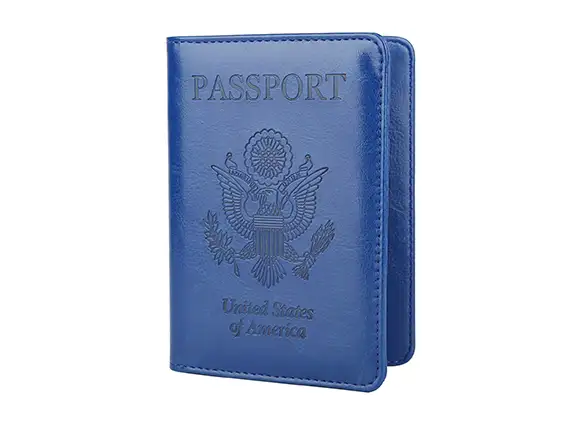Europe is a prime travel destination with 50 incredible countries to visit. It’s important to know what travel documents may be required before you go, however. Each country in Europe has different passport requirements to enter, but all require a valid U.S. passport when arriving from an international destination. Europe passport requirements allow that once you arrive, you can travel between certain countries without a passport, according to the Schengen Agreement, but you will need a passport to cross borders into those that are not part of the Schengen area and when you return home.
A good rule of thumb when visiting most European destinations is to carry a U.S. passport that has at least one blank page for an entry stamp and is valid for at least six months beyond your departure date. Be sure to check for any other requirements in the country you are visiting as soon as you book your tickets.
Europe Passport Requirements
Europe’s passport requirements vary for each of its 50 countries. Each country enforces its own mandatory rules for entering. All of them, however, require a passport for those traveling from an international destination, so it’s wise to make sure you obtain a passport as far in advance as possible before you travel. Most European passport requirements dictate at least one blank page for an entry stamp and a passport that is valid for at least six months beyond your departure date.
As for traveling within Europe, some countries require a passport to cross borders, but 26 countries are a party to the Schengen Agreement, which means you do not need a passport to travel between these countries: Austria, Belgium, Czech Republic, Denmark, Estonia, Finland, France, Germany, Greece, Hungary, Iceland, Italy, Latvia, Liechtenstein, Lithuania, Luxembourg, Malta, Netherlands, Norway, Poland, Portugal, Slovak Republic, Slovenia, Spain, Sweden, and Switzerland. There are three islands that are also part of the Schengen Zone, even though their borders are outside of the continent: The Azores, Madeira, and the Canary Islands.
How to Get a Passport Book for Travel to Europe
Apply for a passport as soon as your travel to Europe is confirmed. The cost will be greater if you apply for a passport within three weeks of travel time and need an expedited application. You can learn more about the requirements and documents needed to obtain a U.S. passport here.
If you already have a valid passport book, make sure it is valid for at least six months after your departure date and has at least one blank page for an entry stamp. If not, apply for a renewal passport at least three weeks before travel or pay a higher fee for an expedited passport.
Other Europe Travel Requirements
Visa: Varies by each European country
Vaccinations: No
So, Do I Need a Passport to Visit Europe?
In summary: Yes. Europe passport requirements state that a valid U.S. passport is necessary to enter any of its 50 countries. Once you arrive in Europe, you can travel between certain countries without a passport, but you will need a passport when departing. Most European passport requirements dictate a passport that is valid for at least six months after departure date and has at least one blank page for an entry stamp.
More Information When Visiting Europe
The U.S. Department of State provides detailed information, including travel advisories and passport validity requirements, to your destination country.
The European Travel Commission offers insightful tips on places to eat, play, and stay within Europe’s diverse countries and regions.
Protect Your Passport
We recommend investing in a passport cover or wallet to protect your pages from bends, tears and spills. It’s important to keep your passport in good condition for easy inspection.
On travel days, only take your passport out during inspection. Otherwise, keep it stowed away in a dedicated section of your bag (if you keep it in the same place every time, you won’t ever scramble to locate it). Once you arrive at your destination, find a way to stow it securely. In-room safes or safe deposit boxes at the hotel front desk are generally good options, but if neither is available, you’ll need to decide how to keep your passport secure. You might consider keeping it in an under-clothing money belt that you wear, or leaving it in the hotel or vacation rental but locking it in your suitcase with a TSA-approved lock.
More from SmarterTravel:
- 5 Exotic Places Where You Don’t Need a Passport
- How to Renew a Passport, Global Entry, and TSA PreCheck—The Ultimate Guide
- How to Take Your Own Passport Photo
Editor’s note: This story was originally published in 2017. It has been updated to reflect the most current information.
We hand-pick everything we recommend and select items through testing and reviews. Some products are sent to us free of charge with no incentive to offer a favorable review. We offer our unbiased opinions and do not accept compensation to review products. All items are in stock and prices are accurate at the time of publication. If you buy something through our links, we may earn a commission.
Related
Top Fares From Columbus, OH
Today's Top Travel Deals
Brought to you by ShermansTravel
Shop and Save with Country Inns...
Patricia Magaña
 Hotel & Lodging Deals
Hotel & Lodging Deals
$229 -- Chicago: Discounted Rates and...
Francesca Miele
 Hotel & Lodging Deals
$229+
Hotel & Lodging Deals
$229+
$188 -- Honolulu: Save on Oceanview...
Abigail Lamay
 Hotel & Lodging Deals
$188+
Hotel & Lodging Deals
$188+












